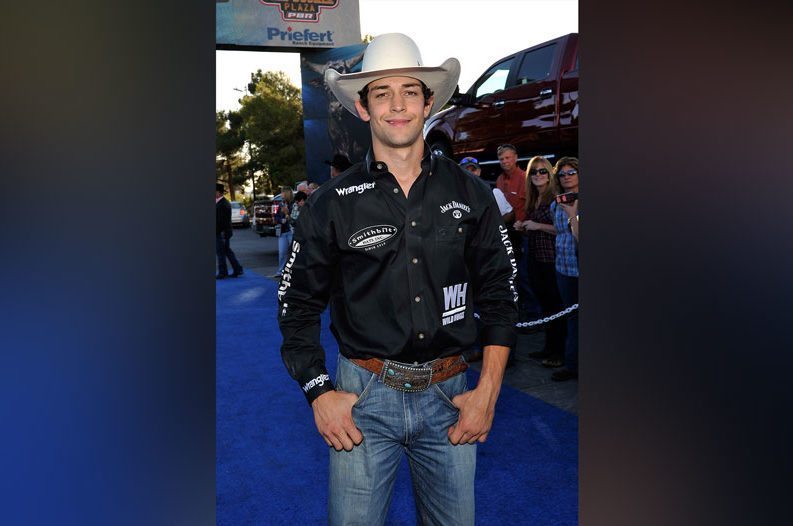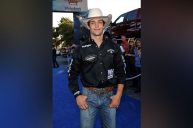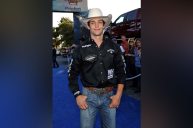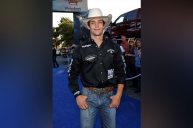On Jan. 9, 2017, Professional Bull Riding lost one of its top athletes when Ty Pozzobon took his own life at only 25 years old. One year later, a foundation started in his name is working to make the sport safer.
Videos by Wide Open Country
Pozzobon experienced one of the most successful years of his career leading up to his death. He made strides both personally and professionally, including a new marriage and some of the most successful rides of his career.
But he also struggled with mood swings and depression: effects of what his family and the bull riding world would later learn was chronic traumatic encephalopathy (CTE). That's the very same condition that may have contributed to the deaths of several high profile National Football League players.
After his death, Pozzobon's family agreed to donate his brain to science. As they suspected, doctors found signs of CTE, and Pozzobon officially became the first professional bull rider to be diagnosed with CTE.
Now, Pozzobon's family and best friend and fellow bull rider Tanner Byrne want to make sure these athletes never happens again.
"The days leading up to [the anniversary of Pozzobon's death] were tough," Byrne tells Wide Open Country. "Thinking about what was going through his mind in those days leading up to it."
The Ty Pozzobon Foundation
With the Pozzobon family's blessing and support, Byrne and others formed the Ty Pozzobon Foundation. The mission statement is simple. "To protect and support the health and well-being of rodeo competitors inside and outside the arena."
But when you peel back what it looks like to actually achieve that goal, the foundation's success to date is fairly remarkable.
"It's been pretty unreal the way that it's come together," Byrne says. "It really changed the minds of bull riders and rodeo athletes. To think about mental health and taking care of yourself instead of just letting yourself get beaten up."
One of the biggest successes for the foundation so far is funding sports medicine and healthcare staff for all PBR Canada events. Now, riders get routine checkups. The foundation also encourages consistent communication between riders and doctors to make sure everybody is taking the proper amount of time to heal.
"It took losing Ty for our sport and our community to take a gut check and think about it," Byrne says. "It's the cowboy mentality right? To keep going no matter what it takes. But we lost the Sidney Crosby of our sport. If it can happen to him, it can happen to anybody."
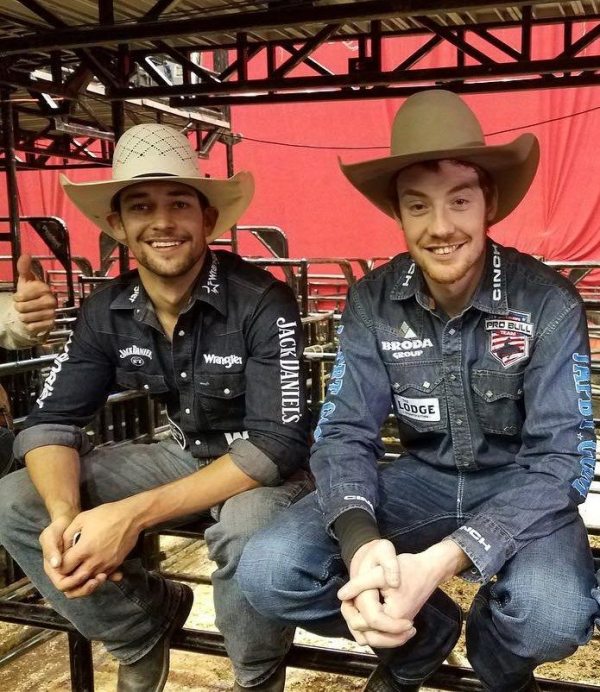
Ty Pozzobon and Tanner Byrne
Changing the culture
Of course, not everybody immediately adopts the urgency of taking better care of yourself. Some older guys in the sport may be too stuck in their ways to take time off after an injury.
But by addressing the youth and changing the culture early, the Ty Pozzobon Foundation hopes to ultimately make the sport better. "We don't know enough about the brain to make proper judgments about how long to sit out or protocols," Byrne says. "But we've gotten everybody on the same page about learning more. And learning early, so nobody has to go through this again."
For perspective, Pozzobon was knocked unconscious at least thirteen times bull riding before the age of 25. He could've suffered several more concussions too, since losing consciousness isn't the only indicator of potential trauma.
"In our sport the attitude used to be if you can get up and walk, you can ride the next day," Byrne says. "We're trying to show people that by waiting to heal, athletes are better and safer. It makes the sport better."
More struggles ahead
Of course, there are still big mountains to climb in the journey to make riding safer. For starters, the very nature of the sport can create a certain level of insular behavior.
Athletes only get paid when they ride, so sitting out after an injury takes money from their pockets. And though cowboys often travel together, there aren't real "teams" to help create injury accountability.
Still, the foundation hopes to tackle these issues in the coming years. "Making sure these guys can't go from association to association and hide from what's happening and get everybody on board is a big goal," Byrne adds.
Ultimately, the foundation has made incredible strides in just one short year. "There's been a change through Ty's death," Byrne concludes. "And it's cool for me to look at it now and know that a year later, we've saved lives through his legacy."
